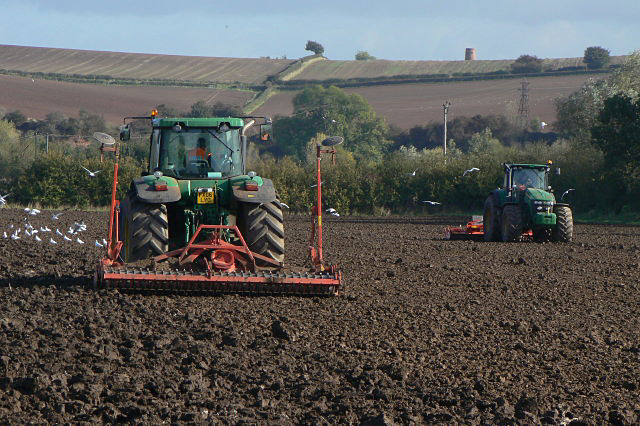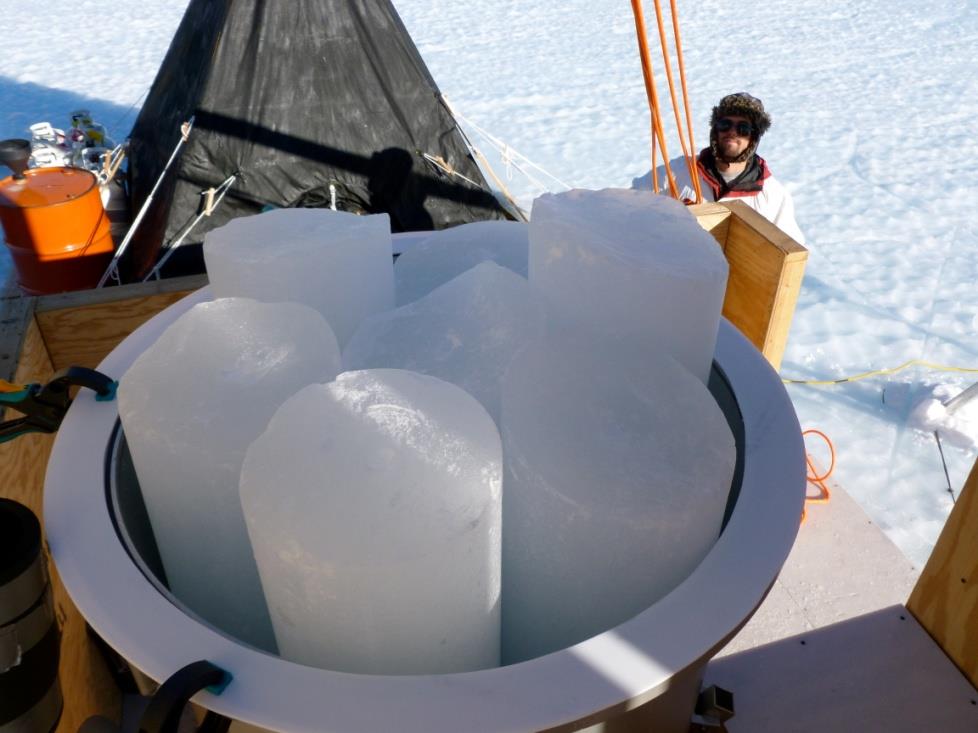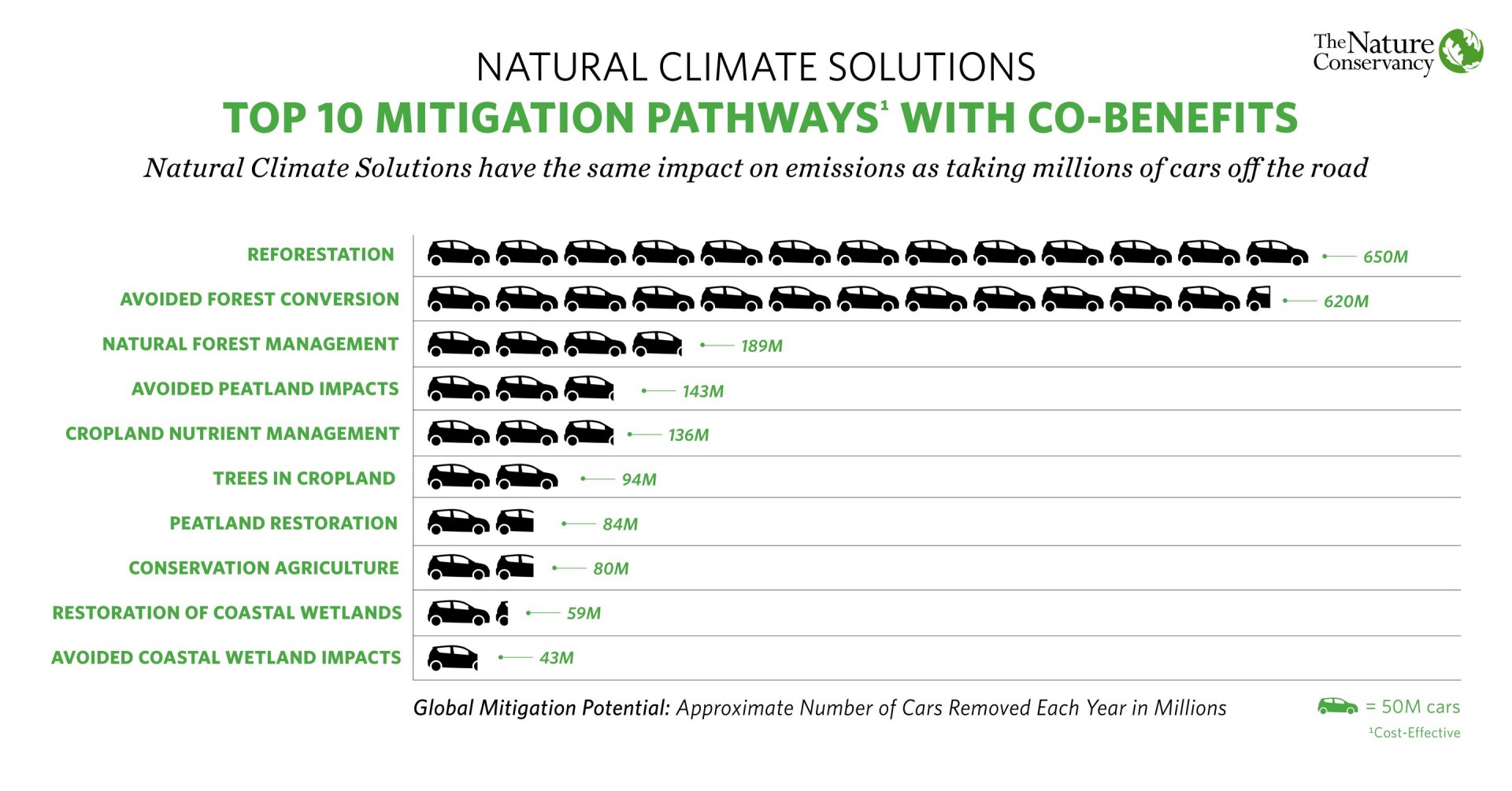
Tilling loosens soil to enable roots to sprout more easily, however it also exposes pockets of 'uneaten' carbon to hungry microbes. (Allan Murray-Rust/Wikimedia)

Tilling loosens soil to enable roots to sprout more easily, however it also exposes pockets of 'uneaten' carbon to hungry microbes. (Allan Murray-Rust/Wikimedia)
The first kingdom to climb out of the primordial muck of Earth’s early ocean were fungi.
They pockmarked hard rock with acid while storing Earth’s carbon-dioxide-rich atmosphere into the ground.
Years later, plants and bacteria followed — establishing themselves in the porous beachheads the fungi carved-out.
The three kingdoms became fast allies, and across a geological timescale of about 400 million years, have partnered in various ways to make Earth the oxygen- and soil-rich world it is today.
But human activity is throwing off the storied balance the kingdoms have built — most notably by emitting carbon dioxide that warms the planet. Thankfully, Earth’s ecological system will step up to bat, and store or eat the problem greenhouse gases just as it always has. While the system can’t wholly make up for a human-induced imbalance of atmospheric carbon dioxide, scientists are finding ways for humans to resolve the crisis. The solutions, they say, are literally underneath our feet.
Learn more about how microbes can help us with sustainable technology.
Methane, a greenhouse gas frozen by the megatons in Earth’s melting ice, holds the potential to dramatically turn up the thermostat for the planet. But new research shows that a bacterial hero from Earth’s soils and seas will keep the thawing gas at bay.
Methane-eating soil microbes will prevent large plumes of methane from reaching the atmosphere as frozen deposits of it begin to thaw due to climate change, according to a paper in Nature published by Vasilii Petrenko and Jeffrey Severinghaus of the Scripps Institution of Oceanography at the University of California, San Diego. While Severinghaus doesn’t study microbes directly, he’s able to show their effect on past climates by going to Antarctica and sampling ancient air.
Scientists previously thought thawing methane deposits may have caused an abrupt 50% rise in atmospheric methane concentration during a rapid warming period at the end of the Younger Dryas, a cold period that ended 11,600 years ago. The prospect raised alarms to a potentially devastating climate feedback from methane, which, molecule for molecule, traps at least 25 times more heat in the atmosphere than carbon dioxide.
Through 10 years of sampling ancient air, Severinghaus, his graduate students and the rest of his team were able to show, however, that during the warming period, no detectable methane in the atmosphere came from thawed deposits.

They demonstrated this by looking at the radiocarbon content of 11,600-year-old Antarctic ice, exhuming a ton for each measurement at a precise and narrow vein of ancient ice originally deposited by snowfall on Younger Dryas glaciers. They gathered a corresponding control of modern-day air, cleaned of carbon-14, for each measurement as well.
Carbon-14 is a naturally occurring radioactive carbon isotope. It builds up in the air and in all living organic things, as cosmic rays bombard atoms in the atmosphere, and is used in carbon dating.
The carbon-14 distinction is important because methane released from thawed deposits has no carbon-14 — it’s so old that the radiocarbon content decayed long ago. But methane released from natural sources such as wetlands is fresh, and does have detectable carbon-14.
Severinghaus said: “If that 50% increase in methane concentration was actually caused by the tundra getting warm and burping out all of this methane, then the concentration of carbon-14 relative to the abundant carbon-12 should have gone down by 30%. We should really see a huge signal if this idea is correct … and we don’t.”
He goes on to explain that methane-consuming soil microbes must have stopped most of the thawing methane from reaching the atmosphere — just as their oceanic cousins did when they ate 99.9% of the methane released during the Deepwater Horizon oil spill in 2010.

Wetlands, which belch methane when it rains, and other natural sources were the main culprits for the rise in methane during the Younger Dryas warming period, Severinghaus said.
“If it didn’t happen back then, it won’t happen now and it won’t happen in the future,” Severinghaus said. “We can focus our attention back on carbon dioxide, which really is the problem, and not worry so much about methane. So check one thing off the list.”
Pockets of soil with low oxygen levels are the key to slowing dead-plant-eating and carbon-dioxide-emitting microbes.
New research fleshes out the role these BB gun pellet-sized granules and clumps of dirt play in the global carbon cycle, concluding they help offset emissions from well-aerated soil. So-called “aerobic” soil contributes a third of annual carbon dioxide emissions, and that may grow as low-oxygen, “anaerobic” pockets get disturbed by warming and human activity, the authors report in their study published in Nature.
Study coauthor Scott Fendorf, professor of earth sciences at Stanford, said, “Your food might spoil faster at a higher temperature; that’s because the microbes are eating faster. So, in the soil, the same thing [happens], the microbes start decomposing the plant material more rapidly, and that means carbon dioxide is being made to a greater extent.”
Fendorf and his team were able to show how the current understanding of soil is flawed. Climate models that deliver temperature projections often treat all upland soil — literally soil at a higher elevation — as aerated. The team found that pockets of asphyxiated soil can and have existed in such environments — thanks to periodic flooding or any number of oxygen-depriving natural occurrences.
Fendorf and his coauthors found spots where old, carbon-rich plant parts still existed. In a 100% aerobic environment they wouldn’t be there, because energized-by-oxygen microbes would eat all the carbon and send it up to the atmosphere as a gas.
The team learned that when microbes have to use a different gas for air, they work far less efficiently — emitting carbon dioxide at a tenth of the speed than well-aerated soil would.
Fendorf added that climate models are evolving to accurately portray the impact low-oxygen pockets have on the global carbon cycle.
“If the temperature and moisture content was all the same, then you could just calibrate models and you’d be fine,” Fendorf said. “But when it starts shifting — if it gets warmer or it gets wetter or drier — then your model has to account for those changes” within both aerobic and anaerobic soils, allowing scientists to better track the resulting carbon dioxide levels.
The authors say we can help retain the pockets where microbes are less efficient — and help reduce carbon emissions — by tilling soil less. The fewer passes a tiller makes, the fewer pockets spill their uneaten bits of carbon to hungry microbes. An increasing number of farmers already have reduced tilling to help reduce their carbon footprints.
But the authors also warn of an increase in the range of dry conditions caused by climate change. Anaerobic pockets surrounded by compacted and moist dirt will bake and turn aerobic, and that will lead to more emissions, as long as it doesn’t get too hot for the microbes to function efficiently.
Carbon capture and storage technologies are being deployed in a piecemeal way, ensuring a negligible impact on the atmosphere and its growing concentration of planet-warming carbon dioxide. Photosynthesis however is alive and well, storing billions of tons of carbon each year.
via GIPHY (NASA photosynthesis visualization from 2013)
A study published in October by The Nature Conservancy and 15 other institutions identified the cheapest ways humans can leverage nature to reduce emissions, factoring in a number of cost constraints, like not reducing food production. They found replanting forests and preventing their loss in countries like Brazil and Russia can have the greatest, cost-effective impact on the atmosphere. In other countries, the study identifies better agricultural practices and wetland preservation as major emission-reducing pathways.
All told, the pathways can account for 37% of the cuts needed to atmospheric carbon dioxide to keep the world from warming past 2 degrees Celsius from pre-industrial levels.
“The vast majority of the scenarios that have been modeled by climate scientists include a very large contribution of what’s called negative emissions technology. Carbon capture and storage would be an example of that,” said coauthor Bronson Griscom, an ecological accountant for The Nature Conservancy.

“Natural climate solutions are the only mature negative emissions technology that we have right now, the only form of negative emissions that we can deploy globally, today, at a cost effective level,” he added.
The researchers assume a social cost for carbon dioxide pollution, and that carbon has value, as is the case in cap and trade deals. Cap and trade is where government comes in and “caps” the amount of carbon dioxide a company can emit. If they want to emit more, all they have to do is buy carbon credits from another company.
For example, Chevrolet paid the University of Illinois at Urbana-Champaign $1 million in 2014 for 150,000 metric tons of carbon credits. The University has since used the money to invest in a grass-fed boiler to heat a greenhouse on campus, which used to be heated by propane.
Locally sourced and grown fuel has a much smaller impact on the atmosphere. Additionally, the feedstock used in the boiler, like the crop Miscanthus, grows year-round and therefore the fields it comes from aren’t tilled nearly as often as a corn field.
Tilling spurs microbes to emit more carbon, and if all corn in the Midwest were changed to Miscanthus, the region would turn from a net carbon dioxide contributor to a carbon storehouse. That’s according to a study published in 2011 that didn’t account for economic factors. They followed it up with another in 2016 that did.
“We considered including a pathway like grassland restoration, and at a global level, we concluded that it wasn’t likely going to be a sizeable pathway. Because of our basic constraint that we maintain the current footprint of agriculture,” Griscom said. “Having said that, as countries start to look at their options, there are some countries that should be looking into grassland restoration as an important opportunity.”
Griscom’s next study, likely to be published sometime this year, focuses on the United States, and one pathway they investigate is grassland restoration. He said the United States has a wide range of options available to it to help the Earth system make up for an imbalance in atmospheric carbon dioxide.
“Nature is often seen as a victim of climate change, but it’s also a huge part of the solution,” Griscom said. “If you think of nature as a machine, it’s an incredibly powerful machine. It would behoove us to turn that machine on full power.”